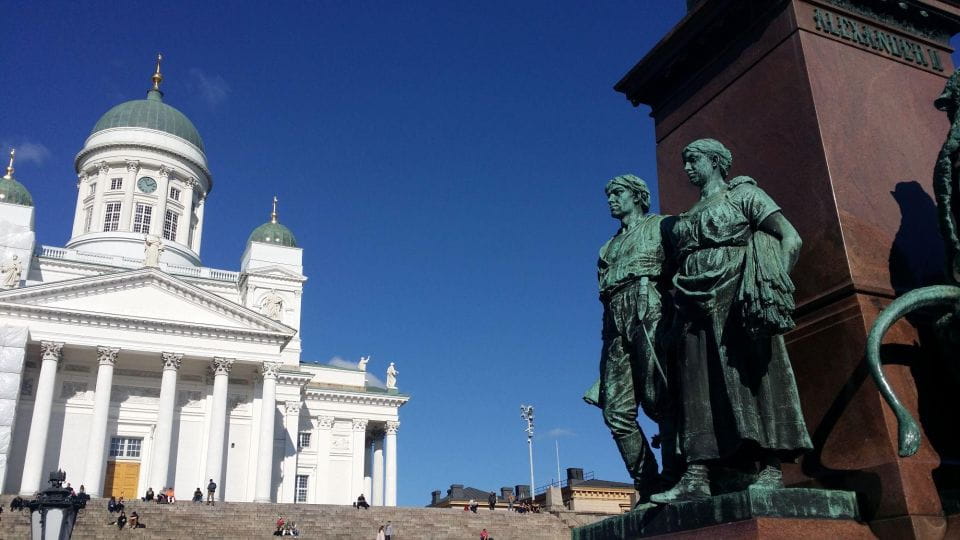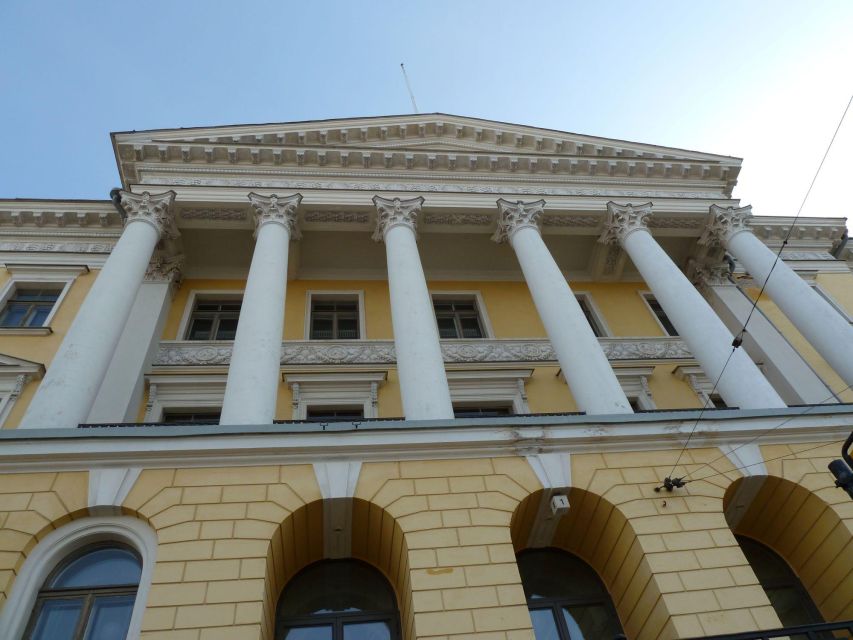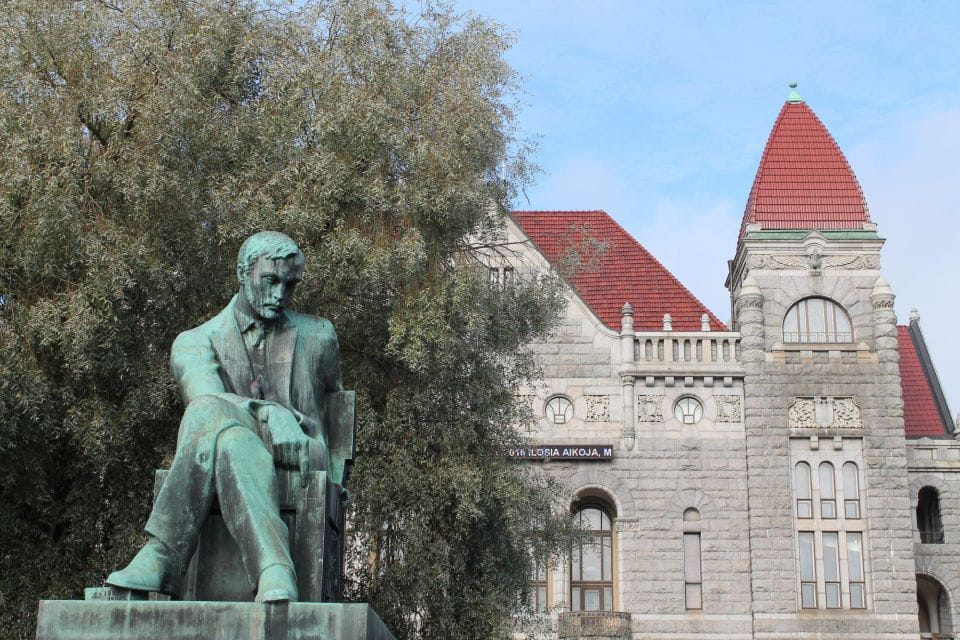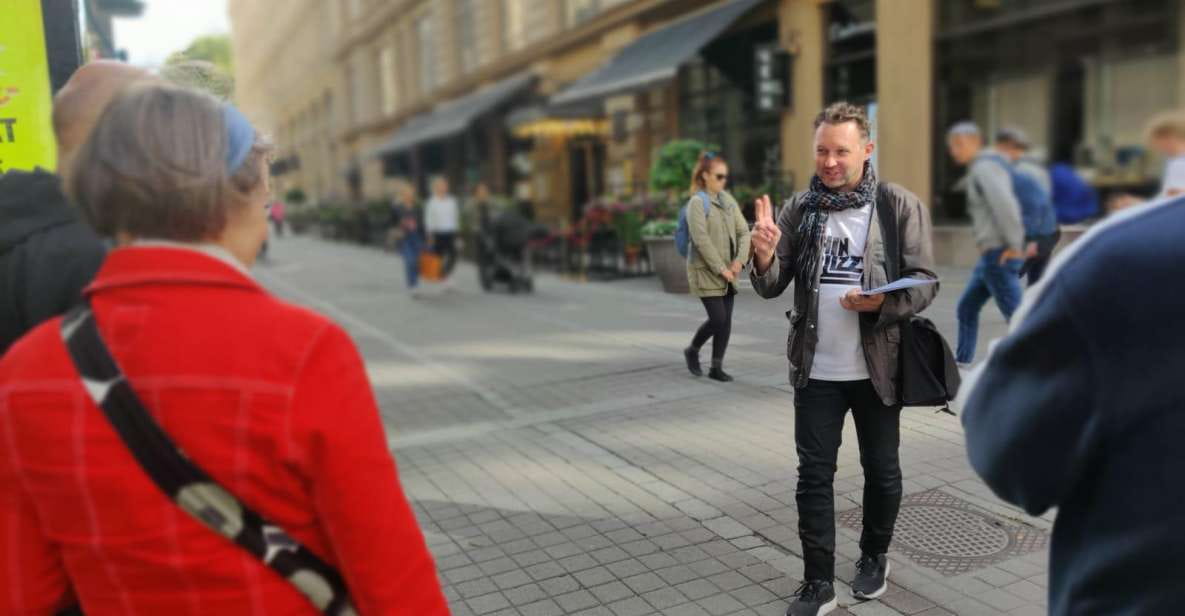Helsinki’s evolution from a humble fishing village to a thriving modern metropolis is a remarkable tale of resilience and reinvention. Founded in 1550 by the Swedish crown, the city soon found itself at the crossroads of European powers, its course shaped by the conflicting influences of Sweden and Russia. Yet, through periods of war and upheaval, Helsinki emerged stronger, its architectural gems and cultural vibrancy testament to the city’s unwavering spirit. Today, this Nordic gem continues to captivate the world, blending its storied past with a future brimming with innovation and possibility. What secrets lie within Helsinki’s timeless streets, waiting to be uncovered?
Key Points

- Founded in 1550 as a Swedish trading post, Helsinki grew into a commercial and cultural center under Russian imperial influence.
- Declared independence in 1917 after the Finnish Civil War, establishing Finland as a sovereign Nordic nation.
- Endured significant damage and civilian casualties during World War II but showcased its resilience by hosting the 1952 Summer Olympics.
- Transformed into a global technology hub in the postwar era, pioneering advancements in mobile communications, gaming, and clean energy.
- Maintains a vibrant and ever-evolving cultural scene, showcasing Finland’s artistic prowess in art, design, music, and visual arts.
Helsinki’s Founding and Early Years

Amidst the rugged Nordic landscape, Helsinki’s origins can be traced back to the mid-16th century when King Gustavus Vasa of Sweden founded the city in 1550 as a trading post along the strategically important Gulf of Finland.
Initially a small fishing village, Helsinki began to flourish as a center of commerce and trade, attracting merchants and seafarers from across the region.
Over the next two centuries, the city would grow and evolve, its fortunes rising and falling with the shifting political tides of the Nordic countries.
Through it all, Helsinki persevered, becoming a hub of Swedish culture and influence, until it was eventually ceded to the Russian Empire in the early 19th century.
Fascinated by Helsinki's past? More historical tours we've covered
Swedish and Russian Influences

As Helsinki grew under Swedish rule, the city’s architecture, governance, and cultural identity became increasingly reflective of its Nordic heritage. The imposing Senate Square and grand Helsinki Cathedral, for instance, showcase the distinct Neoclassical style favored by the Swedish crown.
This Swedish influence would persist even after the city was ceded to the Russian Empire in 1809, as Finland negotiated a degree of autonomy that allowed it to maintain its distinct language, customs, and institutions.
However, the Russian presence also left its mark, with Alexander II’s construction of the striking onion-domed Orthodox Uspenski Cathedral, a striking contrast to the Lutheran spires that dominate the city’s skyline.
Imperial Architecture and Design

Though Helsinki’s architecture and urban design reflect the city’s evolution under Swedish and Russian rule, the most striking examples of imperial influence can be found in the grand public buildings and monuments constructed during the late 19th century.
Prominent among these is the Helsinki Cathedral, a neoclassical masterpiece with its towering green dome and whitewashed facade.
Nearby, the sprawling Senate Square is surrounded by other imperial-era structures, including the Government Palace and the University of Helsinki’s main building, which showcase the neoclassical and Empire styles favored by Russian tsars.
These majestic structures, built to project power and prestige, remain central to Helsinki’s identity and are beloved by locals and visitors alike.
The Road to Independence
Helsinki’s transition to independence from Russian rule in 1917 was a complex and turbulent process, marked by political upheaval, social unrest, and the rise of Finnish nationalism. As the Russian Empire crumbled, Finland seized the opportunity to assert its autonomy, culminating in the Declaration of Independence on December 6th, 1917.
The road to independence was paved with:
- The Finnish Senate’s declaration of sovereignty in November 1917.
- The Finnish Civil War, a bitter conflict between the ‘Whites’ and the ‘Reds’ with Russia’s Bolsheviks supporting the latter.
- The recognition of Finland’s independence by Soviet Russia in 1918.
This eventful period shaped Finland’s identity as a sovereign nation, setting the stage for its rise as a modern, prosperous, and stable Nordic democracy.
Helsinki During World War II
The outbreak of World War II in 1939 thrust Helsinki into the midst of a tumultuous era, as the city found itself caught between the competing forces of Nazi Germany and the Soviet Union. Helsinki’s strategic location made it a prime target, and the city endured several air raids and bombardments. Despite the chaos, Helsinkians displayed incredible resilience, banding together to defend their home and maintain a sense of normalcy. The city also played a critical role in Finland’s efforts to maintain its independence, serving as a hub for military operations and diplomatic negotiations. Though the war years were marked by hardship and uncertainty, Helsinki’s people remained steadfast, laying the groundwork for the city’s eventual postwar transformation.
| Significant Events | Date | Impact |
|---|---|---|
| Winter War Begins | November 1939 | Finnish forces resist Soviet invasion, but Helsinki is bombed |
| Continuation War Begins | June 1941 | Helsinki aligns with Nazi Germany against the Soviet Union |
| Helsinki Bombarded | February 1944 | Extensive damage to the city, many civilian casualties |
| Armistice Signed | September 1944 | Finland agrees to cede territory to the Soviet Union |
| Helsinki Hosts the 1952 Summer Olympics | July-August 1952 | Showcases Helsinki’s resilience and postwar recovery |
Postwar Reconstruction and Modernization
After the tumultuous war years, Helsinki turned its focus towards postwar reconstruction and modernization, determined to rebuild and reinvent itself.
With a resolute spirit, the city embarked on an ambitious program to revitalize its infrastructure, reinvigorate its cultural landscape, and position itself as a forward-looking, cosmopolitan capital.
Key priorities included:
- Rebuilding damaged buildings and neighborhoods to modern standards.
- Investing in public transportation, utilities, and other critical urban systems.
- Promoting arts, design, and cultural initiatives to showcase Helsinki’s vibrancy.
Through meticulous planning and steadfast execution, Helsinki emerged from the ashes of war as a revitalized, dynamic city, ready to embrace the challenges and opportunities of the postwar era.
The Rise of Finland’s Tech Sector
In the decades following the postwar reconstruction, Finland’s capital city rapidly emerged as a global epicenter of technological innovation, transforming itself into a thriving tech hub that would captivate the world.
Driven by a highly educated workforce, progressive government policies, and a culture that celebrated entrepreneurship, Helsinki’s tech sector exploded, spawning renowned companies like Nokia, Rovio, and Supercell.
The city’s vibrant startup ecosystem, world-class research institutions, and cutting-edge infrastructure attracted global talent and investment, cementing Helsinki’s reputation as a premier destination for tech innovation.
Today, the city continues to pioneer groundbreaking advancements in fields like mobile communications, gaming, and clean energy, solidifying its position as one of Europe’s most dynamic and forward-thinking tech hubs.
Helsinki’s Contemporary Cultural Scene
Beneath Helsinki’s centuries-old landmarks, a vibrant and ever-evolving cultural scene thrives, captivating visitors and locals alike.
The city’s contemporary art galleries, cutting-edge design studios, and world-renowned music festivals showcase Finland’s artistic prowess.
Top cultural highlights include:
- The cutting-edge Design District, where trendy boutiques, design-forward cafes, and innovative showrooms mingle with historic buildings.
- The eclectic music scene, from the annual Flow Festival’s indie and electronic acts to the classical concerts at the iconic Helsinki Music Centre.
- The dynamic visual arts landscape, with thought-provoking exhibitions at venues like the Ateneum Art Museum and the Helsinki Art Museum.
Amidst this cultural renaissance, Helsinki emerges as a nexus of Nordic creativity and innovation.
Frequently Asked Questions
How Long Is the Typical Walking Tour of Helsinki?
The typical walking tour of Helsinki lasts 1.5 hours, providing an engaging exploration of the city’s highlights like Senate Square and Helsinki Cathedral. This private group tour is offered in English and Finnish.
Is the Walking Tour Available in English and Finnish?
The walking tour of Helsinki is available in both English and Finnish, allowing visitors to experience the city’s highlights in their preferred language. The private group tour lasts 1.5 hours and is led by a professional local guide.
What Is the Maximum Group Size for the Walking Tour?
The walking tour offers a private group experience, allowing visitors to explore Helsinki’s highlights at their own pace. The maximum group size is not specified, ensuring a personalized and flexible tour tailored to each group’s needs.
Can I Cancel the Walking Tour in Advance?
Yes, the tour offers free cancellation up to 24 hours in advance, allowing customers to change their plans if needed. This flexibility ensures a hassle-free experience for the private group walking tour of Helsinki’s highlights.
What Are the Highlights of the Walking Tour?
The walking tour highlights the iconic Senate Square, the grand Helsinki Cathedral, and the lively Esplanadi Park. Visitors can expect an engaging exploration of Helsinki’s top attractions with a knowledgeable local guide.
Recap
Helsinki’s remarkable journey from a humble fishing village to a thriving global hub is a testament to its resilience and adaptability.
The city’s rich cultural tapestry, blending Swedish and Russian influences, has given rise to a dynamic metropolis renowned for its cutting-edge design, robust technology sector, and vibrant arts scene.
As Helsinki continues to evolve, its past remains a source of pride, shaping the city’s unique identity and inspiring its promising future.
More Historical Tours in Helsinki
More Tour Reviews in Helsinki
Not for you? Here's more things to do in Helsinki we have recnetly reviewed
- From Helsinki: 7-Day Lapland Northern Lights Tour
- Helsinki: Helsinki City Sights – A kayaking tour!
- Helsinki: Private RIB Boat Cruise with Snacks and Drinks
- Helsinki: Express Main Highlights
- Helsinki Highlights+Nuuksio Buggy Ride+Reindeer farm visit
- Helsinki: Essential City Highlights Walking Tour
- Suomenlinna: Guided Walking Tour with an Authorized Guide
- Helsinki: Private Kayak Tour in Eastern Helsinki Archipelago
- Private Helsinki and Porvoo Combo by Car
- Helsinki: Reindeer Park visit and Buggy Adventure
- Helsinki: Private Boat Tour with Local Captain
- Tallinn-Helsinki All Inclusive Ferry Day Trip Business Class
